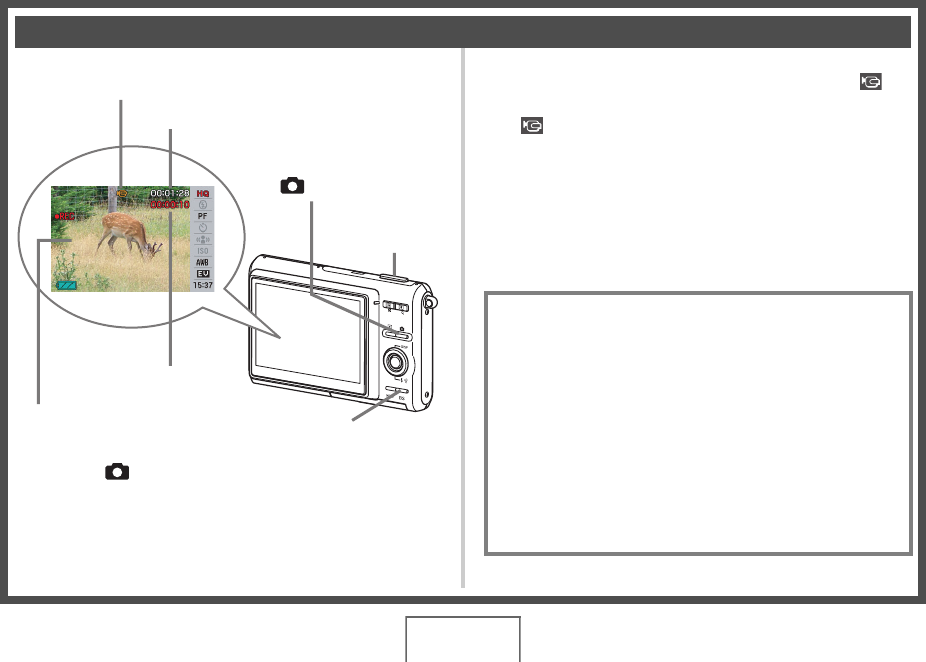User Guide
Table Of Contents
- UNPACKING
- CONTENTS
- QUICK START BASICS
- INTRODUCTION
- GETTING READY
- SHOOTING A SNAPSHOT
- SHOOTING A MOVIE
- USING BEST SHOT
- ADVANCED SETTINGS
- Changing the Focus Mode
- Correcting Image Brightness (EV Shift)
- Controlling White Balance
- Specifying ISO Sensitivity
- Specifying the Metering Mode
- Using the Camera’s Filter Effects
- Controlling Image Sharpness
- Controlling Color Saturation
- Adjusting Image Contrast
- Date Stamping Snapshots
- Using the On-screen Histogram to Check Exposure
- Other Useful Recording Functions
- VIEWING SNAPSHOTS AND MOVIES
- EDITING IMAGES
- USING AUDIO
- MANAGING YOUR FILES
- DELETING FILES
- OTHER SETTINGS
- Configuring Camera Sound Settings
- Turning the Startup Screen On or Off
- Specifying the File Name Serial Number Generation Rule
- Changing the Camera Date and Time Setting
- Using World Time
- Changing the Display Language
- Changing the USB Port Protocol
- [_] (REC) and [>] (PLAY) Button Settings
- Formatting Built-in Memory
- PRINTING
- USING THE CAMERA WITH A COMPUTER
- APPENDIX

18
QUICK START BASICS
(page 81)
1. Press [ ] to enter the REC mode.
2. Press [BS] (BEST SHOT).
3. Use [S], [T], [W], and [X] to select the “ ”
(Movie) scene and then press [SET].
“ ” (movie icon) remains on the monitor screen.
4. Press the shutter button to start shooting the
movie.
• Audio is also recorded during movie recording.
5. Press the shutter button again to stop
recording.
Shooting a Movie
Movie Icon
Remaining Recording Time
Recording Time
[] (REC)
Movie Recording Screen
Shutter Button
[BS]
Movie Image Quality
Your camera lets you select from among three image quality
settings (HQ, Normal, LP) for movies. For best camera
performance, use the “HQ” (High Quality) setting for movie
recording.
Movie quality is a standard that determines the detail,
smoothness, and clarity of the image during playback.
Reducing image quality let’s you shoot longer, so you can
switch to “Normal” or “LP” conserve remaining memory
capacity if you start to run low.
For details, see pages 81 and 228.
B










